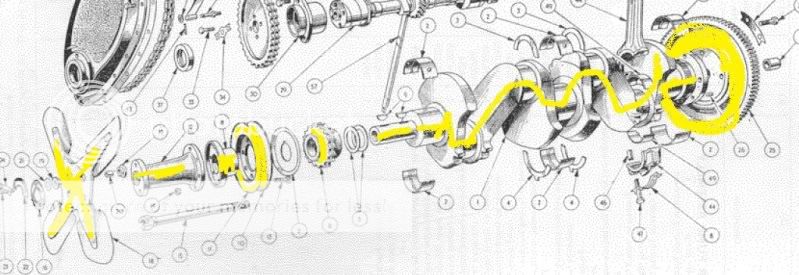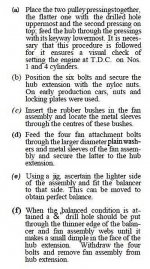-
 Hi Guest!
Hi Guest!
If you appreciate British Car Forum and our 25 years of supporting British car enthusiasts with technical and anicdotal information, collected from our thousands of great members, please support us with a low-cost subscription. You can become a supporting member for less than the dues of most car clubs.
There are some perks with a member upgrade!**Upgrade Now**
(PS: Subscribers don't see this gawd-aweful banner

Tips
- We have a special forum called "Member Articles" where you can submit actual articles for consideration for publication. Learn More
- Don't have an Avatar? If not, your avatar will default to the 1st character in your username. Go into "Account Details" to change your Avatar.
- Some basic forum navigation info: click
Hey - did you know if you click on the title of a thread it will take you to the first unread post since you last visited that thread?
- Hey Guest - Is your British Car Club in our Clubs database? If not, send me a PM - Basil

- Looking for a local club? Click the "Clubs" tab above and browse hundreds of clubs world-wide.
- Add Android or iPhone APP: click
- Did you know - any picture or video you add in your posts in any marque-specific forum will also get added to the Media Gallery automatically.
- A few more tips about posting and replying: click
- Hey there Guest - be sure to keep your profile page up to date with interesting info about yourself: learn more
- More tips and tricks on Posting and Replying: click
 STOP!! Never post your email address in open forums. Bots can "harvest" your email! If you must share your email use a Private Message or use the
STOP!! Never post your email address in open forums. Bots can "harvest" your email! If you must share your email use a Private Message or use the  smilie in place of the real @
smilie in place of the real @
- Want to mention another member in a post & get their attention? WATCH THIS

- So, you created a "Group" here at BCF and would like to invite other members to join? Watch this!
- Hey Guest - A post a day keeps Basil from visiting you in the small hours and putting a bat up your nightdress!
- Hey Guest - do you know of an upcoming British car event?
 Pretty Please - add it to our Events forum(s) and add to the calendar! >> Here's How <<
Pretty Please - add it to our Events forum(s) and add to the calendar! >> Here's How << 
- Hey Guest - you be stylin'
Change the look and feel of the forum to fit your taste. Check it out
- If you run across an inappropriate post, for example a post that breaks our rules or looks like it might be spam, you can report the post to the moderators: Learn More
- If you would like to try some different "looks" or styles for the site, scroll to the very bottom, on the left and click the Style Selector.
You are using an out of date browser. It may not display this or other websites correctly.
You should upgrade or use an alternative browser.
You should upgrade or use an alternative browser.
Balancing a radiator fan[?]
- Thread starter RJS
- Start date
martx-5
Yoda
Offline
When I removed the fan on my TR3A, it had two of those balancing weights on it. IIRC, the factory service manual mentions something about balancing the fan. Of course, there probably aren't too many TRs running around out there that have had there fans balanced once they were removed for the first time. I think it's more important to make sure that the blades are in line and there are no cracks etc. Also, it would be a good idea to replace the rubber bushings and lockplate.
Geo Hahn
Yoda
Offline
TR3driver said:Oh, that'll buff right out !
Alas, the 'outie' bonnet dent it made would not...
Got lucky on the 2nd one... it hit the bonnet support and ricocheted downward.
MGTF1250Dave
Jedi Knight
Offline
Aloha Bob,
The factory marked the balanced fan assembly by drilling a small hole through the pieces and fan down to the hub extention. This was to make a reference point so if nencessary it could be taken apart and reassembled and still reatain balance. If you are using the original fan and hub extention, a good start is to line up these holes. In Geo's photo you can see the hole on the fan blade on the right in the 12 o'clock position. Since you didn't have balancing weight on disassembly, you may not need them. The locking plate is fairly symmetrical, light in weight and close to the center of rotation so I think it will have very great affect on balance. The tab washer plates can only be mounted between the same bolts as the were originally so I don't think these will influence balance.
The factory marked the balanced fan assembly by drilling a small hole through the pieces and fan down to the hub extention. This was to make a reference point so if nencessary it could be taken apart and reassembled and still reatain balance. If you are using the original fan and hub extention, a good start is to line up these holes. In Geo's photo you can see the hole on the fan blade on the right in the 12 o'clock position. Since you didn't have balancing weight on disassembly, you may not need them. The locking plate is fairly symmetrical, light in weight and close to the center of rotation so I think it will have very great affect on balance. The tab washer plates can only be mounted between the same bolts as the were originally so I don't think these will influence balance.
angelfj1
Yoda
Offline
Here's something I responded to on the TRA site.
https://triumphregister.lefora.com/2012/03/18/adjustment-of-balance-piece-tr3/#post1
https://triumphregister.lefora.com/2012/03/18/adjustment-of-balance-piece-tr3/#post1
RJS
Jedi Warrior
Offline
Dave,
Got it, thanks. I note the pin hole in the fan and see how it lines up with the pin hole in the hub. Makes sense to me.
Frank, I'll just double check the balance using your method but, since there were no weights when it came off, I doubt I will add any weights unless it is grossly out of balance (which I doubt).
New rubber bushings,locking plates and hardware going on.
Cheers,
Bob
Got it, thanks. I note the pin hole in the fan and see how it lines up with the pin hole in the hub. Makes sense to me.
Frank, I'll just double check the balance using your method but, since there were no weights when it came off, I doubt I will add any weights unless it is grossly out of balance (which I doubt).
New rubber bushings,locking plates and hardware going on.
Cheers,
Bob
angelfj1
Yoda
Offline
Geo Hahn said:That procedure seems to just balance the fan
So, that was the original question, wasn't it?

The hub has a much larger mass but small radius of gyration, and thus easier to balance and perhaps less effect on the balance of the fan-hub assembly.
An ideal case would be to balance the entire assembly from fan to flywheel, assuming that other components have been considered, e.g. con rods, pistons, etc. I understand this is routine in race car engine assembly.

But, considering the fan alone, these are known to self-destruct. If you balance the fan and check that the rivets are tight, you can avoid the metal fatigue in the blades and possibly a damaged radiator.
danbateman
Freshman Member
Offline
i also broke a fan blade while driving did not damage any thing. i bought a plastic yellow fan from trf said it does not need balanced. runs great.
CJD
Yoda
Offline
I am just thinking here...
It seems that balancing the fan would not have any affect on the fan assembly itself...as you are not modifying the assembly, but rather just compensating for their imbalance at the bolts. So the blades and rivets would seem to be a simple matter of fatigue, from flaws or later damage...but not likely from the imbalance. In other words, the blades have no idea wheather the balance weights are on or not. They will still be imbalanced after the weights are added, the weights just compensate for their imbalance.
The balancing would really only seem to matter to the hub extension and the front of the crankshaft...as they will receive all the stress from an imbalance. If the fan is balanced, the hub extension will see zero extra load. If the fan is unbalanced, the hub sees all the extra load...and the crank sees even more, as the extension acts like a lever.
Anyway, like I said...just trying to think it through here. I think the balancing is for the crank longevity, and not for the fan assembly.
John
It seems that balancing the fan would not have any affect on the fan assembly itself...as you are not modifying the assembly, but rather just compensating for their imbalance at the bolts. So the blades and rivets would seem to be a simple matter of fatigue, from flaws or later damage...but not likely from the imbalance. In other words, the blades have no idea wheather the balance weights are on or not. They will still be imbalanced after the weights are added, the weights just compensate for their imbalance.
The balancing would really only seem to matter to the hub extension and the front of the crankshaft...as they will receive all the stress from an imbalance. If the fan is balanced, the hub extension will see zero extra load. If the fan is unbalanced, the hub sees all the extra load...and the crank sees even more, as the extension acts like a lever.
Anyway, like I said...just trying to think it through here. I think the balancing is for the crank longevity, and not for the fan assembly.
John
TR3driver
Great Pumpkin - R.I.P
Offline
I dunno, vibration does strange things, especially if you find a resonant spot. The fan would possibly get violent shaking in addition to its normal stress as a fan; which might be enough to make it flex and work harden.
At any rate, the book specifically mentions balancing the fan, without saying a word about balancing other components. Could just be coincidence or a tech writer's whim; but I have a suspicion there was a deeper reason.
At any rate, the book specifically mentions balancing the fan, without saying a word about balancing other components. Could just be coincidence or a tech writer's whim; but I have a suspicion there was a deeper reason.
Geo Hahn
Yoda
Offline
TR3driver said:...the book specifically mentions balancing the fan, without saying a word about balancing other components. Could just be coincidence or a tech writer's whim; but I have a suspicion there was a deeper reason.
As I recall the factory team had some misadventures at Le Mans with a couple of fans.
So that is an original tr4 fan Geo? To start with it does not look very symmetrical. The blades look like they would pulsate between blade patterns, like a one two one two. Many years ago, (1982) I bought a parts car that had a bent tropical fan on it. The blades had it radiator just a little. I took a pair of sheet metal tongs and a hammer straightened it out, and have driving it for 20 years that way. Sounds good runs great.
HerronScott
Darth Vader
Offline
Yes, those are original TR4/TR4A fans in Geo's picture. I'm thankful I never had an issue with it yet!
Scott
Scott


